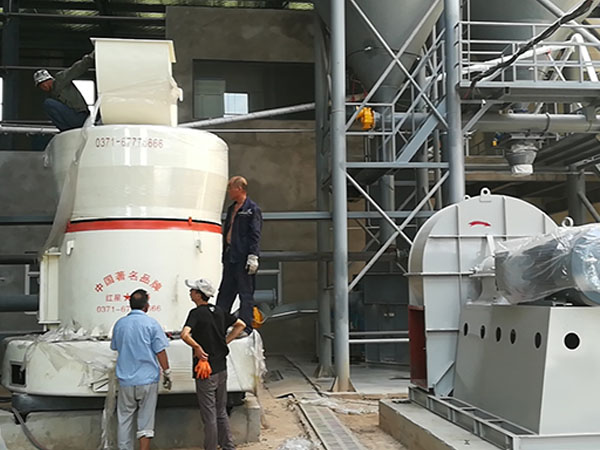NEWS
How Does A Grinding Mill Operate in A Cement Factory?
By: Fote MachineryAugust 09th,2022
As one of the most commonly used raw materials, cement plays an important role in the construction of projects, civil industries, transportation, and other industries. Cement vertical mill equipment is a commonly used grinding equipment in cement plants. Because of its good quality and low energy consumption, it is favored by large customers.

In cement production, most raw materials are broken, such as limestone, clay, iron ore, and coal. Limestone is the raw material with the largest amount of cement. After mining, the particle size is large and the hardness is high. Therefore, the crushing of limestone plays an important role in the material crushing of cement plants.
The pre-homogenization technology is to realize the initial homogenization of raw materials by using scientific stacking and reclaiming technology in the storage and retrieval process of raw materials so that the raw material yard has the function of storage and homogenization. Reasonable selection of grinding equipment and process flow, optimization of process parameters, correct operation, and control of the operating system are of great significance to ensure product quality and reduce energy consumption.

Cement grinding is the last process of manufacturing cement and also the most power-consuming process. Its main function is to grind cement clinker ( and cementing agent, performance regulating material, etc. ) into suitable particle size ( represented by fineness, specific surface area, etc. ), form a certain particle size distribution, increase its hydration area, accelerate hydration speed, meeting the requirements of cement paste clotting and hardening.
Since the vertical mill is the bed grinding, the key to the stable operation of the vertical mill is to form a stable material layer. There are various reasons for the large vibration and frequent vibration of the vertical mill. Therefore, the operating parameters should be adjusted in time according to the material situation, the data of the laboratory and the operation of the mill. The mill state should be comprehensively judged and analyzed by observing the outlet temperature of the mill, the pressure difference inside the mill, the thickness of the material layer, the vibration value, the main motor current, and the external circulation. The mill should be dynamically adjusted according to the situation to ensure that the mill is always in a stable state and achieve the purpose of high yield and energy saving.

